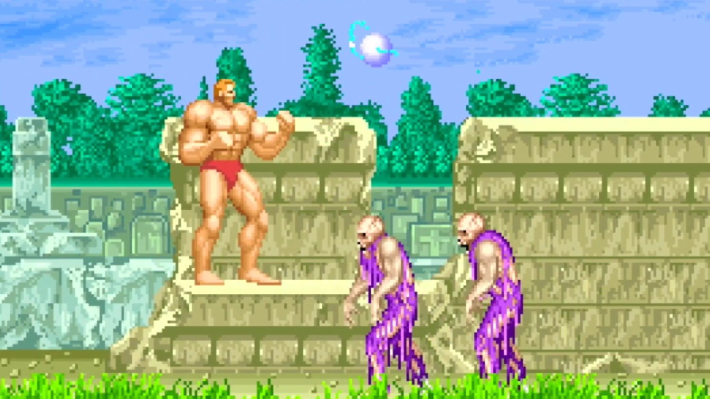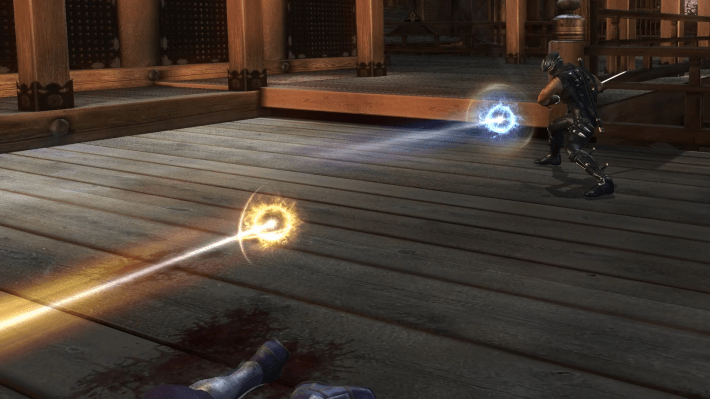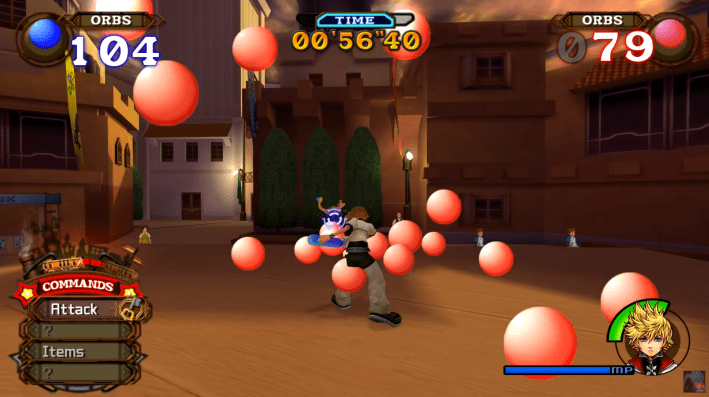There was a time long ago when games were full of orbs. You couldn’t swing a sword without a foe dropping several. As the years have gone by, the focus of gaming has shifted away from the humble orb. This is not to say that we are a people without orbs; many games still feature them prominently. But there was a time and a place when the orb reigned supreme, like the cowboy or the samurai or annoying party photographers with handlebar mustaches. But unlike those things, orbs were ultimately a force of good, and we should encourage their return.
But first, we must seek to understand the humble orb. What follows is in no way a complete history of the orb, but rather a simple overview of the orb’s rise and fall in gaming.
What Is An Orb?
Before moving forward, it is worth constructing a framework for what I mean by “orb.” The platonic ideal of an orb, to me, is a glowing soul-like particle effect. It is usually, but not always, colored-coded, and oftentimes unaffected by gravity. It is often implicitly spiritual, oftentimes being called a “soul.” Sometimes an orb is an upgrade, but more often it is currency and/or experience.

Not all of these parameters are strictly necessary. 2D orbs exist, and are fundamental to the development of the orb as a concept, particularly when you look at SHMUPS and games like Altered Beast. That said, if you are too permissive with your definitions, you start saying stuff like “are Sonic’s rings orbs?” which is an absurd statement. I think it is also worth stating that an orb is distinct in nature from a gem, although there is a zone of ambiguity here, like in the Devil May Cry series where the orbs are basically the Beherit from Berserk, and comprise a dramaturgical duality of existing in both an orb and gem state.

The modern orb begins to take its shape around the emergence of consumer 3D graphics, but what I call “peak orb” begins in the Playstation 2 and Xbox era and extends one full console cycle before losing cultural dominance. It is a global phenomenon, although Japan is unquestionably better at its implementation. Many noteworthy examples of orb-centric games within this specific milieu exist, including Soul Reaver, Fable 2, Jak and Daxter, Onimusha, Metroid Prime, Nanobreaker, God of War, Prototype, Devil May Cry, Crackdown and Ninja Gaiden. Of the noted examples, Onimusha and Soul Reaver are noteworthy because they feature a mechanic where you can suck up the orbs like a vacuum or Kirby, which feels really sick and cool when you do it. That mechanic and orbs as a concept would reach its ultimate apotheosis with Ninja Gaiden I & II, which would integrate the absorption of orbs into the core combo loop and in the process create the two games tied for the title of “Greatest Game Of All Time.”

It is worth exploring some atypical orbs. The aforementioned Crackdown added an entirely new innovation to the genre with the agility orb: collectible, out of the way orbs scattered over the city that would slightly increase your vertical jump every time you got a new one. This feedback loop was notoriously addictive in its nature, although it’s a hard trick to pull off more than once and subsequent games could never hit the same highs as the first. Bullets are often orb-shaped, as is often the case in SHMUPS, but are not themselves “orbs” unless they are collectible, and thus Ikaruga features projectiles which can transition between orb and non-orb states. Kingdom Hearts and Dark Cloud 2 have orb-shaped objects in them, although they are flat sprites that do not glow, fall to the ground, and more resemble classical currency than soul-based orbs. My gut tells me that this should count against them, but that would require disagreeing with Kingdom Hearts fans in a public forum, and since I don’t want to get yelled at for 3-6 days, I will say that counts too.

Wherefore Art Thou Orbs?
The orb eventually went out of fashion, at least in the AAA space. Perhaps the orb waned because it lacked verisimilitude. As games sought legitimacy and a wider audience, they attempted to shed elements that would be construed as overly busy, uncinematic, “gamey,” and thus potentially embarrassing. A prime example of this is God of War, a series which started off about being a pissed guy who gets a lot of orbs, but would get rebooted in the PS4 era to be about being a dad with trauma and significantly fewer orbs. Sometimes the humble orb would be replaced with garish, disgusting “loot” (Team Ninja has unfortunately fallen prey to its siren call, much for the worse). This is particularly noticeable as games as a service became ascendent. The concept of the orb-as-soul would oftentimes persist, but be made invisible and automatic for the sake of efficiency. But even when they do not strictly feature orbs, FromSoft games are orb-coded in nature, and you can trace a direct line from Onimusha and Ninja Gaiden to Sekiro. And there are places where the humble orb persists, like Dragon Ball Z: Kakarot, Warframe, Dead by Daylight, and to some extent Destiny 2. Like adventure and strategy games, the orb did not so much die as become eclipsed by forces and audiences larger than itself.

Though orbs are not what they used to be, they live on in our hearts. As long as events like GDQ exist, the orb shall never fully fade from our memories. We should embrace them, embrace the era of Peak Orb once again along with the arcadey, goofy style of gameplay they represent. Games are not better than orbs; gaming would not be where it is today without hardworking, lunchpail orbs. I think it’s about time we finally gave our floating friends the respect and reverence they deserve.


